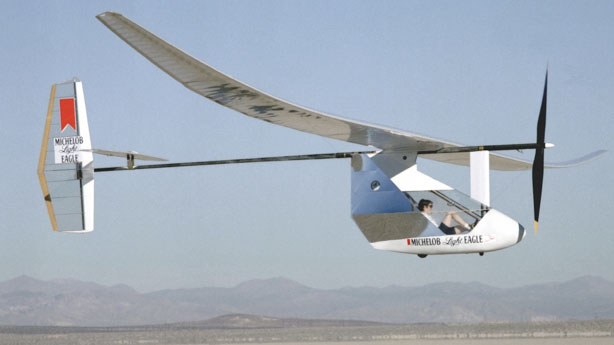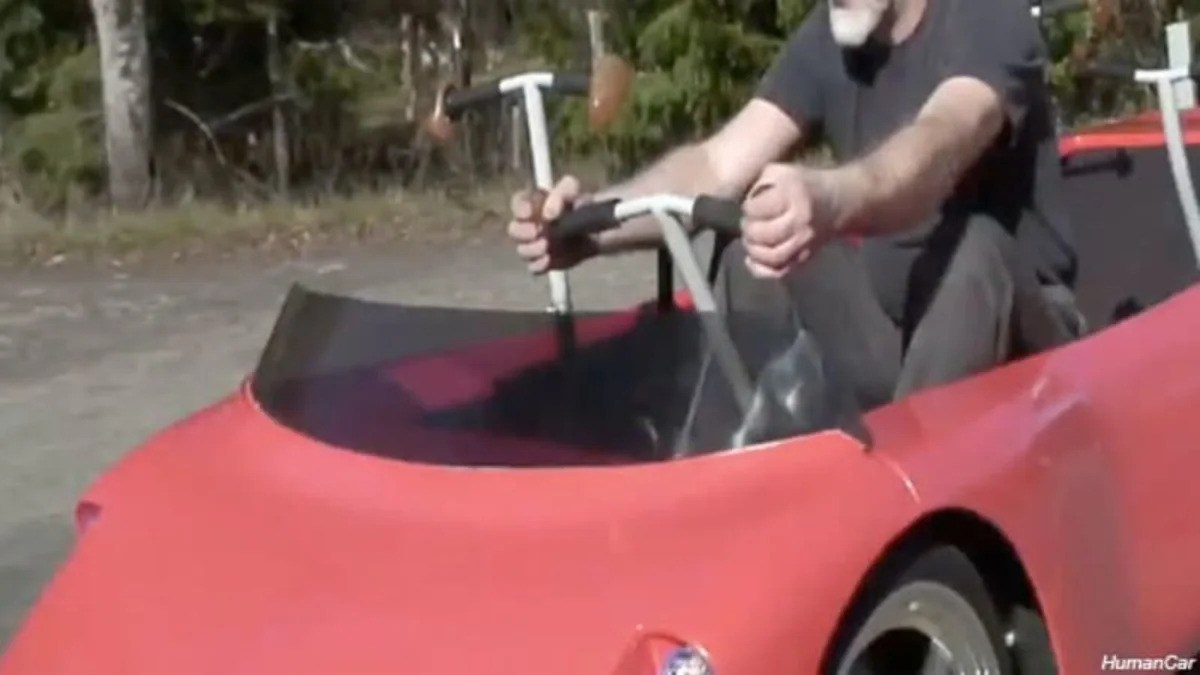In Episode 1.1 of TRANSLOGIC, we introduced you to the HumanCar Imagine_PS, something that looks like a modern-day railroad car. What makes the Imagine_PS go is good old elbow grease (and a lot of it -- think of the vehicle as a four-man rowing machine), running on calories as opposed to carbons. The vehicle's two electric motors in the wheels generate about four horsepower (about the power of a weed whacker), creating what inventor Charles S. Greenwood calls a "bionic human hybrid." Drivers can either power the car with their Hulk Hogan arms or turn on the motors for a blend of meat-based and electron-based power. Part of the HumanCar's charm is clearly the human part of the equation. The thinking goes: Not every journey should require speeds over about 30 mph, so why would you need an engine at all? While the first upright Oreopithecus began walking and we've more or less figured that out, turns out that there's more to getting around than our gams.
In fact, some other non-traditional transports might tempt your Flintstonian fantasties if the HumanCar doesn't put you off:
Trikke
Good If You: Want A Workout
Cost: $500
The Trikke (from the Lykke Li school of double consonant spelling) could be pitched as the HumanCar for people short on friends: it's a one-man "carving vehicle." Row, lean and twist and the Trikke goes forward, turns and stops. It looks a little funny, but it beats walking.
Daedalus
Good If You: Don't Fly Too Close To The Sun
Cost: $1 million
MIT's Aeronautics and Astronautics Dept and NASA teamed up to create this human-powered aircraft about 20 years ago, setting the world record for a human-powered flight (71.5 miles over 3 hours and 54 minutes) when Olympic cyclist Kanellos Kanellopoulus flew from Crete to Santorini under his own power. Four times per hour he radioed reports of the conditions (he was sweating profusely inside the 70-pound, enclosed craft) and almost made it all the way. Winds at Perissa beach on Santorini tore the plane apart, leaving the Olympian to crash into the sea. The crash put an end to the $1 million project but had no such effect on the festivities given in Kanellopoulous's honor later that evening.

Powerskips
Good If You: Seek A Giant Step For Mankind
Cost: $1000
These super stilts fall into the category of powerbocking (the original idea was cooked up by altitude addict Alexander Bock, from Germany), which could be described as the coolest and most dangerous way to walk. Strap the spring-loaded stilts onto your lower extremities and leap your way to the grocery story in a matter of minutes. I'm not sure how you'd get the eggs home, though.
In fact, some other non-traditional transports might tempt your Flintstonian fantasties if the HumanCar doesn't put you off:
Trikke
Good If You: Want A Workout
Cost: $500
The Trikke (from the Lykke Li school of double consonant spelling) could be pitched as the HumanCar for people short on friends: it's a one-man "carving vehicle." Row, lean and twist and the Trikke goes forward, turns and stops. It looks a little funny, but it beats walking.
The video meant to be presented here is no longer available. Sorry for the inconvenience.
Daedalus
Good If You: Don't Fly Too Close To The Sun
Cost: $1 million
MIT's Aeronautics and Astronautics Dept and NASA teamed up to create this human-powered aircraft about 20 years ago, setting the world record for a human-powered flight (71.5 miles over 3 hours and 54 minutes) when Olympic cyclist Kanellos Kanellopoulus flew from Crete to Santorini under his own power. Four times per hour he radioed reports of the conditions (he was sweating profusely inside the 70-pound, enclosed craft) and almost made it all the way. Winds at Perissa beach on Santorini tore the plane apart, leaving the Olympian to crash into the sea. The crash put an end to the $1 million project but had no such effect on the festivities given in Kanellopoulous's honor later that evening.

(NASA)
Powerskips
Good If You: Seek A Giant Step For Mankind
Cost: $1000
These super stilts fall into the category of powerbocking (the original idea was cooked up by altitude addict Alexander Bock, from Germany), which could be described as the coolest and most dangerous way to walk. Strap the spring-loaded stilts onto your lower extremities and leap your way to the grocery story in a matter of minutes. I'm not sure how you'd get the eggs home, though.
The video meant to be presented here is no longer available. Sorry for the inconvenience.


Sign in to post
Please sign in to leave a comment.
Continue